The tiny inshore island of Inishbiggle, Co Mayo, may be protected from the high seas by Achill’s imposing presence to the west but that hasn’t stopped its declining population from being in “intensive care” for as long as Christy Henry can recall.
When hundreds of visitors gather over the August bank holiday weekend, from near and far, to mark the 30th anniversary of the annual island festival, Henry tells the upbeat gathering that their “generosity and commitment to the community in returning each year gave the island a bit of a heartbeat again”.
“It’s like climbing Croagh Patrick for Reek Sunday,” says one regular. “It is part of our annual calendar.”
That didn’t involve saying a prayer this year in the island’s Anglican church, built by the onetime landlord, evangelical missionary Rev Edward Nangle, in the 1850s, as part of the famous Achill Colony. Despite the fact that the church’s unique heritage was further enhanced when it was re-dedicated to ecumenical use in 2002, it is now in disrepair with warning signs on the gate.
READ MORE
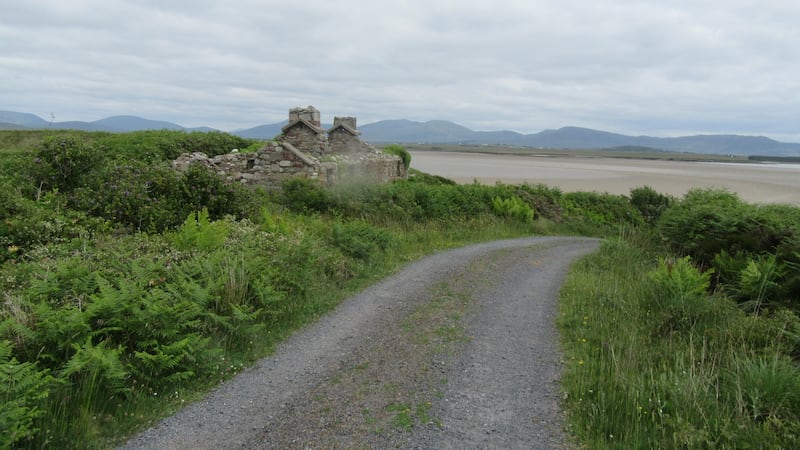
Two days after this year’s festivities, the only ceol agus craic is the languid flapping of the empty marquee at the former schoolhouse, now used as a community centre and doctor’s surgery.
Despite a sunny forecast, the island is shrouded in a warm mist. It seems to sympathise with the enveloping silence and the ever-present past – forlorn houses, empty fields – which dominates when the realities of a future are challenged.
In the case of this community, it is not the ghosts of the Blasket Island’s Tomás Ó Criomthain or Peig Sayers, whose prescience sings sean-nós on the breeze. It is rather Christy’s late father, Paddy Henry, the iar-mháistír in the island’s national school, and a lifetime activist for its survival until his death, aged 90, in 2010.
When taoiseach Bertie Ahern invited him to a grand Oíche na Gaeilge in the State Rooms in February 2001, he decided to give it a miss. The then octogenarian was tired of the unfulfilled promises of officialdom.
Henry had been fighting for proper and safe access to the island since 1984. Feasibility studies had concluded a cable-car service costing €2 million from Achill was the preferred option. Ultimately, due to complex issues, the project did not materialise. Paddy Henry’s long-held mantra became even more stark, as he once again asked: “How long does it take for an island to die?”
Christy now echoes his father’s feelings as we chat in the old school. “We are just waiting for the island to die,” he says sadly. “The profile of the population tells its own story: there is only one resident now who is under 60.”
The sense of inevitability is easily clarified when calculating whether the number of full-time residents is either 12 or 16, depending on who you ask and how “permanency” is adjudged.
“The death knell was when the school closed back in 1989. Unless we get new blood and the school is reopened, it is just a matter of time,” says Christy.
Only 2½km long and 1½km wide, ‘Biggle sits squat between Achill and the mainland village of Ballycroy, which is home to the Wild Nephin National Park and the vast blanket bogs of Erris.
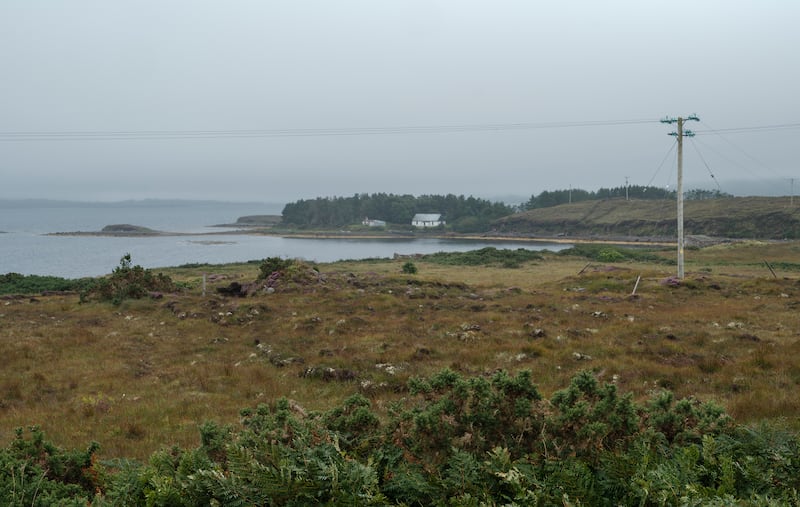
It is just 400 metres from Bull’s Mouth harbour, to the north of Achill’s connecting bridge to the mainland. The currents on this narrow stretch of water, which thunder in from Blacksod Bay, are among the most dangerous in western Europe. In 2003 it took its toll when South African-born ‘Biggle resident John Allen was lost while returning home after shopping in Westport.
Fortunately, the little island’s main harbour is in more sheltered waters on its eastern side at Gobnadoogha.
For ferry owner Michael Leneghan, bringing people on the government-registered Iomaire Gainnimh – a small open boat with an outboard engine – back and forth to the mainland pier at Doran’s Point is still a labour of love after 21 years.
He beams as his brother, Timmy, helps me and photographer Michael McLaughlin on-board. We are the only passengers.
“Our family has been doing this since the 1940s and we used to bring the priest over from Ballycroy every Sunday too for Mass,” he says, guiding the little boat out through the shallow waters.
Michael Leneghan has nothing but praise for former minister Éamon Ó Cuív who, after the campaign for the cable car service from Achill was unsuccessful, ensured that €700,000 was allocated to the development of a safe harbour in the mid-2000s.
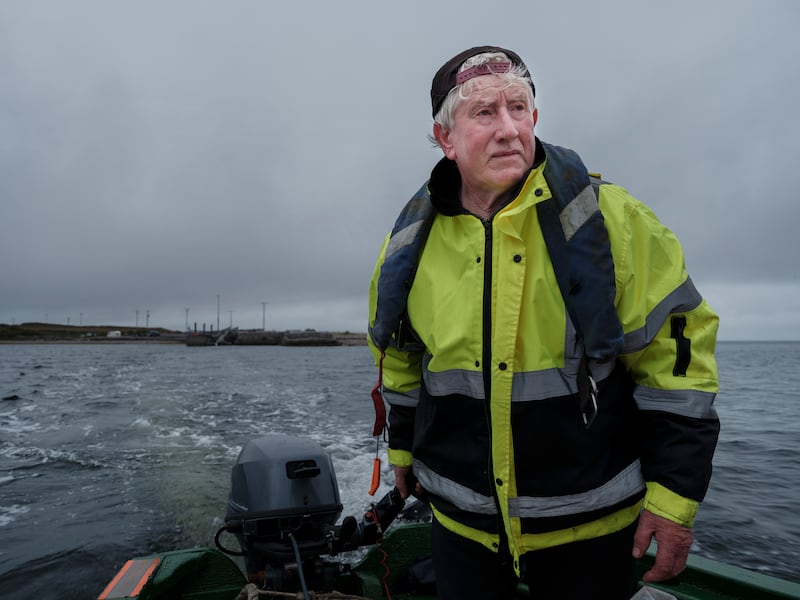
An optimist, despite the fact that when he attended Scoil Naomh Mhuire in the mid-1960s there were 37 pupils, he observes: “I see people coming back and revamping houses that were once in their families. The new government grants and the option of remote working are providing a great incentive for people who want a different quality of life.”
It is the height of the summer season, and while the mainland car parks of other Co Mayo islands are chock-a-block, Leneghan confirms there has been a daily average of five or six visitors when the weather was good over this summer. He is all too aware that the lack of facilities – there are no public toilets or cafes – is a problem, compounded by the need for a more co-ordinated promotional policy.
“We could do with a few more visitors,” he observes wryly. “Although the looped walk here on the island has been good for tourism when the weather is good.”
Two walkers who have travelled from Bulls Mouth on the post boat, a currach, stop for a chat.
Mayo man Frank Fahy says he worked with Fáilte Ireland when the national looped walk networks were originally being developed. “We came out from Achill this morning to do the walk here today and are delighted that it is now signed. This 4km walk is ideal for moderately fit walkers. It would be great, though, if there was a pop-up cafe or even a cupán tae in somebody’s house,” says Fahy.
His companion, Mary-Clare Kerin, says: “I think it is fantastic here. It is only 4km, completely safe, with no traffic, and the roads are in great condition for the walk.”
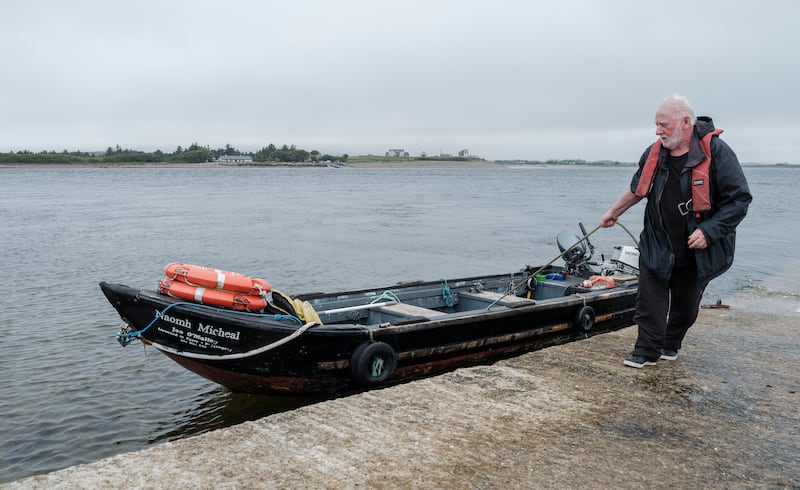
They are chuffed that Joe O’Malley – who delivers the post from Achill in his currach four days a week – offers to collect them from the little slipway whenever they want.
O’Malley was born on ‘Biggle, where his mother was the postmistress.
Resettling on Achill after he moved home from England, he says: “I’ve never seen it as quiet with visitors. I used to take people over from Achill with bicycles and they’d cycle around and go off the other side to Ballycroy. Of course, the weather hasn’t helped this summer.”
[ More Ireland IslandsOpens in new window ]
Long-time resident Jeremy Holt, who was born in London, is philosophical about the future of the island.
“I’d say the native population will peter out and it will become like west Cork, with lots of holiday homes and part-time residents.”
His Cork-born wife, Doris died some years ago and there is a memorial slab to her inside the gates of Holy Trinity Church.
Holt hopes a proposed project by Rev Michael Burrowes, the Anglican bishop of the United Dioceses of Tuam, Limerick and Killaloe, might contribute to the restoration and conservation of the church.
“He came visiting fairly recently and discussed a master plan to use the church and island for retreats. Accommodation, of course, is the problem but I’m sure it could be resolved,” says Holt. “This would certainly be a positive development for the island.”
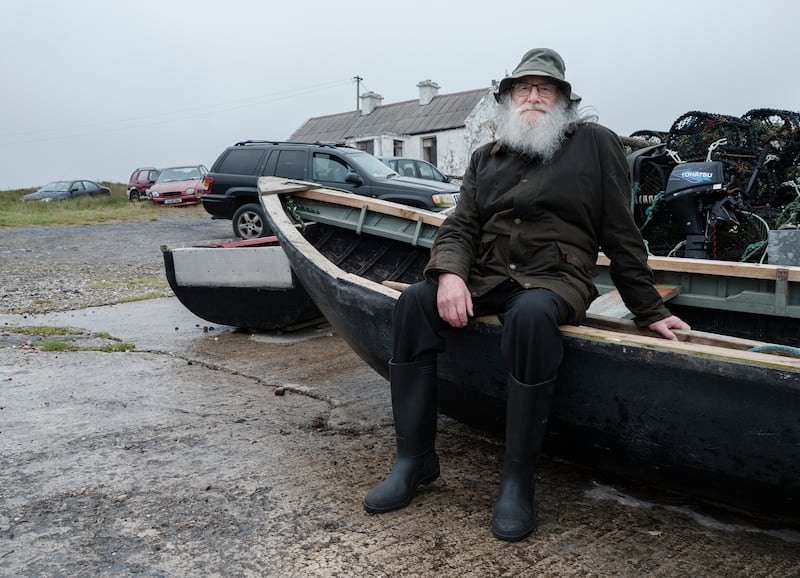
Holt’s other immediate concern is the fact that the once state-of-the-art helipad has been significantly neglected, with the emergency lights now turned off.
“We have an elderly population here, and on two occasions in the last six months the rescue helicopter has been forced to land in a field. That is not acceptable,” says Holt.
Fortunately, there is no need for a helicopter despite the disappointing weather. The Iomaire Gainnimh sits ready and waiting for us in the still harbour, with its floating pontoon and gangways and gabion walls at Gobnadoogha.
“You know we call it Pearl Harbour there are so many stones in the gabion defences. The running tides have certainly been rising regularly since the piers were built 20 years ago,” says Leneghan.
The impact of climate change is another existential challenge for this tiny community with a unique 19th-century heritage thanks to a Victorian proselytiser named Nangle.
Ireland’s Islands Series
Tomorrow: Part Five - Barry Roche visits Sherkin Island


















